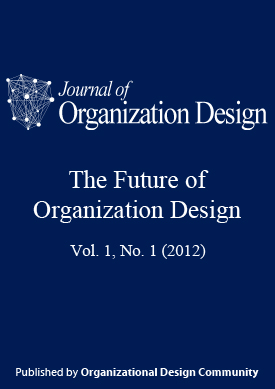Open Innovation and Organization Design
DOI:
https://doi.org/10.7146/jod.6336Keywords:
Organization Design, Open InnovationAbstract
Abernathy's (1978) empirical work on the automotive industry investigated relationships among an organization’s boundary (all manufacturing plants), its organizational design (fluid vs. specific), and its ability to execute product and/or process innovations. Abernathy's ideas of dominant designs and the locus of innovation have been central to scholars of innovation, R&D, and strategic management. Similarly, building on March and Simon's (1958) concept of organizations as decision making systems, Woodward (1965), Burns and Stalker (1966), and Lawrence and Lorsch (1967) examined relationships among organizational boundaries, organization structure, and innovation in a set of industries that varied by technology and environmental uncertainty. These and other early empirical works have led a diverse group of scholars to develop theories about firm boundaries, organization design, and the ability to innovate.
Downloads
Published
How to Cite
Issue
Section
License
JOD requires that at least one author of each accepted paper sign a Copyright Transfer Agreement form. Copyright will be transferred to Organizational Design Community when the paper has been accepted.
Articles published in JOD are licensed under a Creative Commons Attribution-NonCommercial-NoDerivs 4.0 Unported License.



